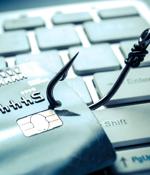Security News

An evolving phishing campaign observed at least since May 2020 has been found to target high-ranking company executives across manufacturing, real estate, finance, government, and technological sectors with the goal of obtaining sensitive information. The messages also include an embedded link to retain the same password that, when clicked, redirects users to a phishing page for credential harvesting.

A very active phishing campaign is underway pretending to be from the UK's National Health Service, alerting recipients that they are eligible to receive the COVID-19 vaccine. The phishing email, shown below, asks the recipient if they want to accept or decline the invitation to schedule their COVID-19 vaccination.

A very active phishing campaign is underway pretending to be from the UK's National Health Service, alerting recipients that they are eligible to receive the COVID-19 vaccine. The phishing email, shown below, asks the recipient if they want to accept or decline the invitation to schedule their COVID-19 vaccination.

Asset and wealth management companies play an important role in handling finances and investments for different clients throughout the world. A report released Thursday by digital risk company Digital Shadows examines why and how AWM companies are vulnerable to cyberattack and how they can defend themselves.

The FBI is cautioning companies to beware of a slew of voice phishing attacks aimed at capturing the login credentials of employees. In an advisory released last Thursday, the FBI revealed that as of December 2019, cybercriminals have been working together on social engineering campaigns targeting employees at large firms both in the US and abroad. The criminals are taking advantage of VoIP platforms to launch voice phishing, or vishing, attacks.

The Federal Bureau of Investigation has issued a Private Industry Notification to warn of attacks targeting enterprises, in which threat actors attempt to obtain employee credentials through vishing or chat rooms. An observed shift in tactics, the FBI says, is the targeting of all employee credentials, not exclusively of those individuals who might have higher access and privileges based on their corporate position.

Attackers are using the normally harmless Windows Finger command to download and install a malicious backdoor on victims' devices. This week, security researcher Kirk Sayre found a phishing campaign utilizing the Finger command to download the MineBridge backdoor malware.

With an inherent emphasis in "Privacy-by-default", Hoplite Technology announced the new launch of a free anti-phishing solution named Anti-Phishing Bot to protect everyday users against phishing attacks. Due to the lack of ways to verify the identity of the senders, everyday users without technical trainings will often find it difficult to distinguish a phishing attack as the red flags are hidden in different parts of an email.

Some of the brands abused through this scam are extremely popular in Europe and include LeBonCoin, Allegro, OLX, Sbazar, FAN Courier, Lalafo, Kufar and DHL. Scam expanding to Europe. The scammers publish ads on popular marketplaces and classifieds claiming to offer various products at low prices.

A PayPal text message phishing campaign is underway that attempts to steal your account credentials and other sensitive information that can be used for identity theft. When PayPal detects suspicious or fraudulent activity on an account, the account will have its status set to "Limited," which will put temporary restrictions on withdrawing, sending, or receiving money.